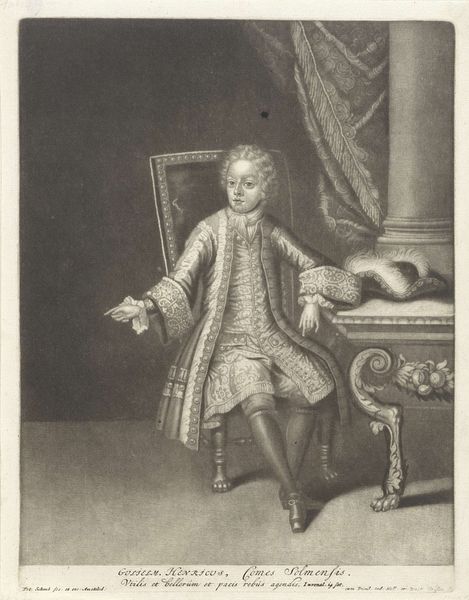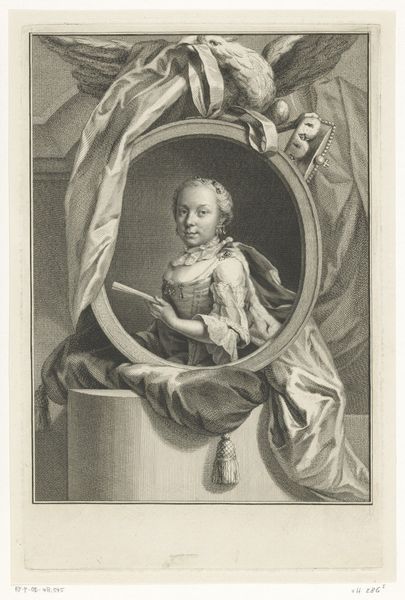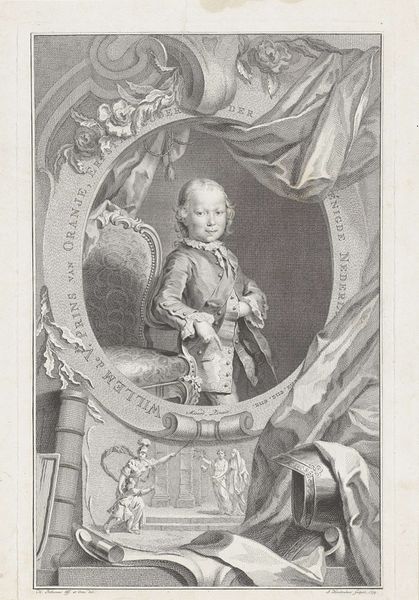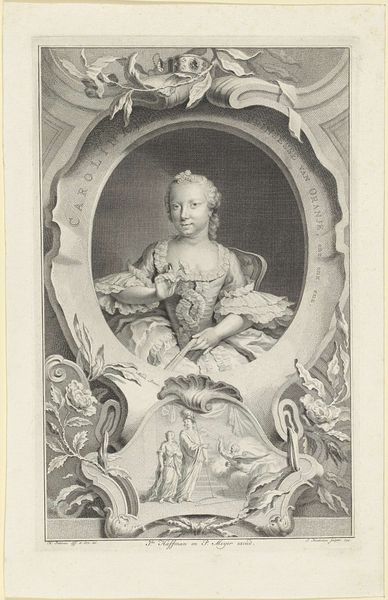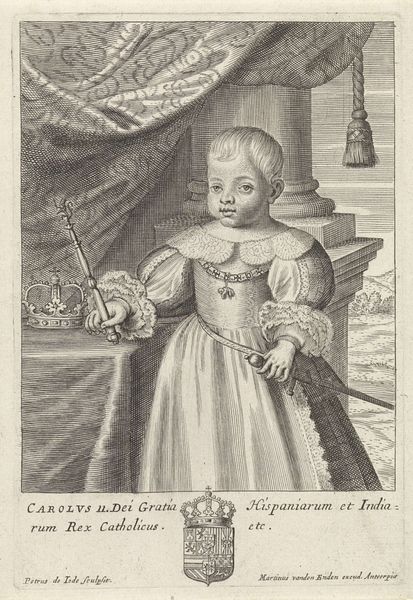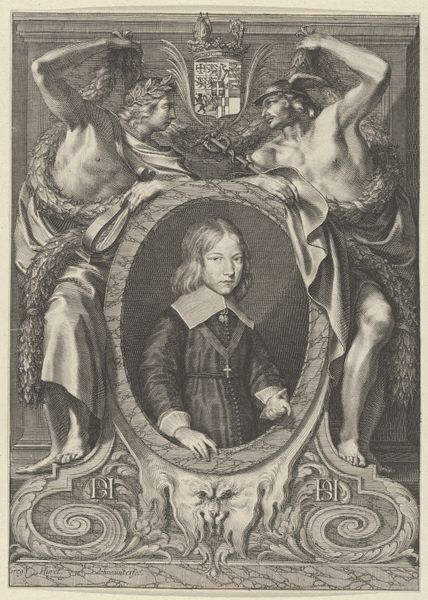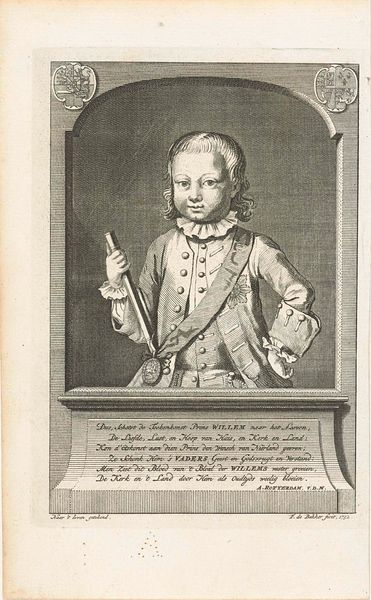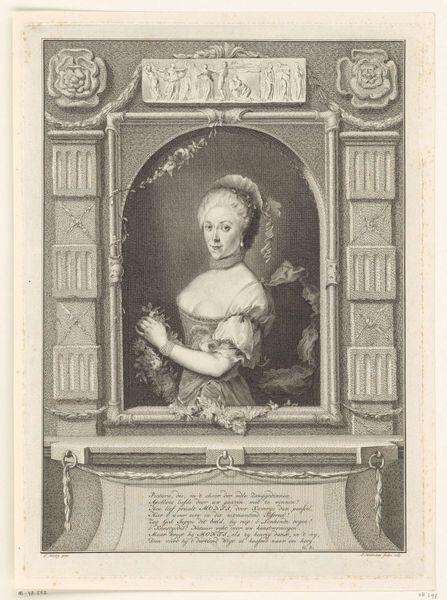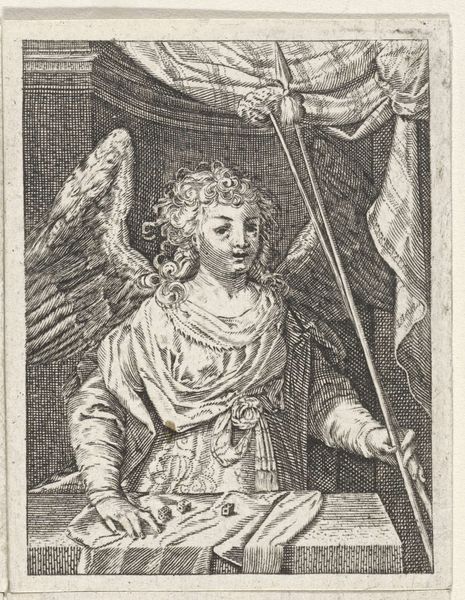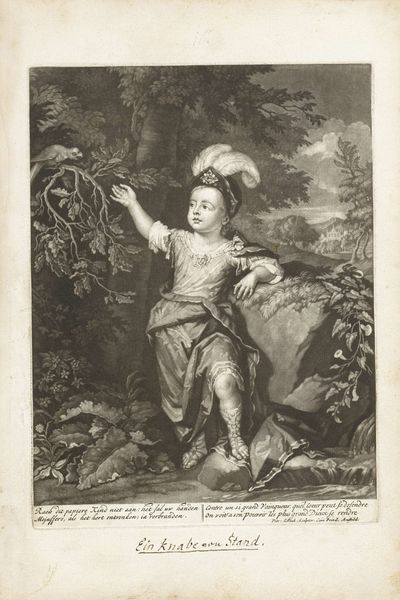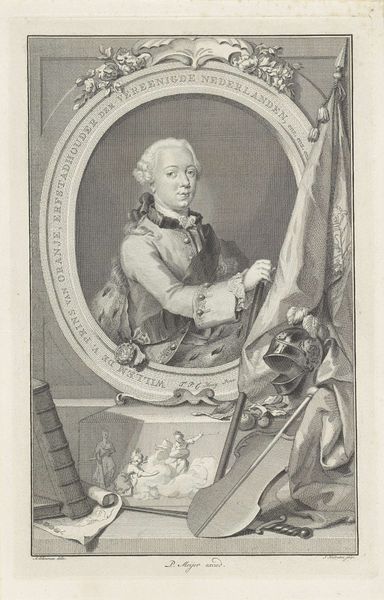
engraving
#
portrait
#
baroque
#
old engraving style
#
portrait reference
#
history-painting
#
engraving
Dimensions: height 313 mm, width 211 mm
Copyright: Rijks Museum: Open Domain
Editor: This engraving from 1743 by Jacob Houbraken, titled "Portret van Jozef II, Duits keizer, als kind," depicts Joseph II as a young child. The detail is remarkable, especially considering it's an engraving. What strikes me is the contrast between the elaborate royal regalia and Joseph's youth. How do you interpret the symbolic weight of these elements? Curator: Notice how young Joseph clutches a string of jewels almost like a toy, an indication of what is both given and expected. This is cultural memory being manufactured. What objects of power were intended to represent in 1743 are probably lost to contemporary viewers. What could they communicate today? Editor: Perhaps ideas about dynastic succession and the weight of inherited responsibility? Do you think Houbraken intended to convey anything about Joseph's personality, or was it purely symbolic? Curator: The softness of the child's face offsets the rigid expectation of empire. Think of the crown placed on the cushion behind him. Its grandeur dwarfs the boy, almost swallowing his individuality. Is it a projection of power, or an unconscious symbol of what that power could cost? Editor: That’s a fascinating idea. The composition almost suggests the crown’s weight. It gives me a lot to think about in terms of visual cues, and how they shape narratives. Curator: These potent emblems of royalty don't exist in a vacuum; they build layers of meaning over centuries. Symbols resonate, they evolve. Keep that in mind.
Comments
No comments
Be the first to comment and join the conversation on the ultimate creative platform.
